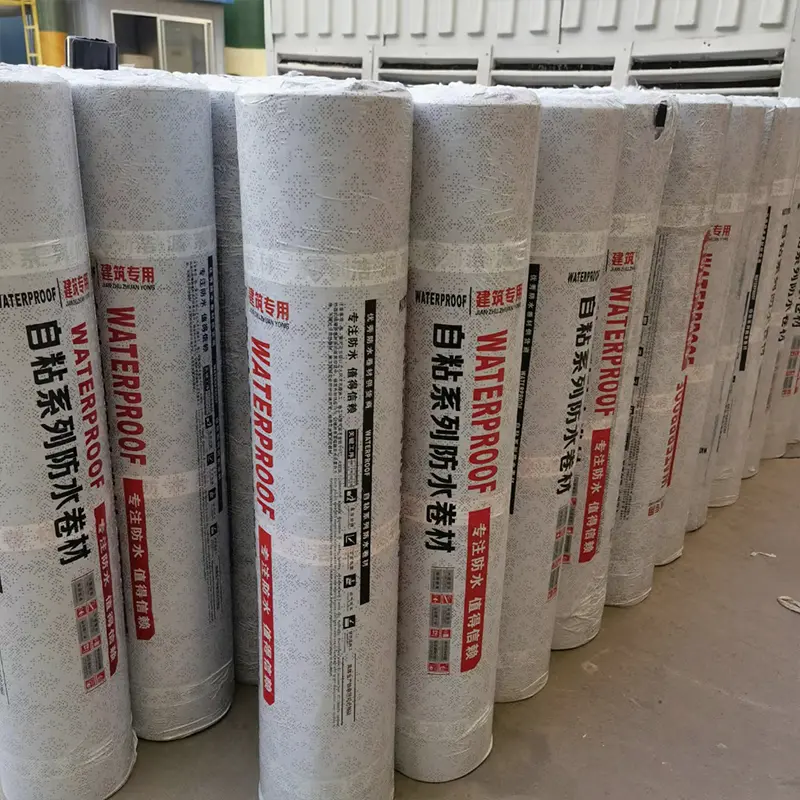Why did a self-adhesive waterproofing membrane for roof fix problems I used to call “normal”?
2025-11-10
After years walking roofs, I used to shrug at small leaks and winter stains as inevitable. That changed when I began specifying Self-adhesive Waterproofing Membrane on tricky details and full decks. As my projects scaled, I paid closer attention to which brands stayed consistent across lots and seasons. That is how Haoyuan Waterproof came into my orbit — not as a flashy pitch, but through steady performance that kept callbacks off my phone.
What do I mean when I say “self-adhesive” in the real world?
In practice, self-adhesive means I peel a release film and press down a polymer-modified bitumen sheet that bonds without hot torches or buckets of liquid glue. It bridges hairline cracks, seals nail penetrations after shingling, and wraps valleys and eaves where ice dams and wind-driven rain love to test patience.
How do the common membrane families differ when I am choosing on site?
On most jobs I see two workhorse families that cover nearly every scenario. I avoid jargon with clients, yet I choose between them with intent.
| Membrane family | Core build | Top surface | Release layer | Where it shines | My field notes |
|---|---|---|---|---|---|
| N-type base-free self-adhesive | Rubber-modified asphalt blend with strong tack, no internal fabric carrier | Film options like PET or PE, sometimes aluminum foil for sun or fire reflection | Silicone-coated film that peels cleanly | Complex details, curved flashing, quick repairs, foil version for UV-exposed strips | Excellent conformability and bite, great for corners and tight radii |
| PY-type polyester-reinforced self-adhesive | Polyester mat embedded in a tackified polymer-modified asphalt compound | Choices like PE film, fine mineral sand or slate granules, or foil | Silicone release film on the underside | Full-deck underlayment, long runs, higher foot-traffic during install | Tracks straighter on big sheets, feels calmer under warm boots |
| Foil-faced self-adhesive strip | Similar adhesive layer with aluminum top sheet | Reflective foil | Silicone release | Parapet caps, metal laps, solar mounts, chimney saddles | Useful when sun and heat are relentless and I still need a clean finish |
Which substrates accept a self-adhesive membrane without drama?
- Plywood and OSB behave well when dry and swept free of dust
- Cast-in-place concrete bonds after laitance is removed and a compatible primer is rolled on
- Galvanized steel, aluminum, and painted metal accept foil-faced strips once lightly cleaned
- Masonry like brick or block benefits from a leveling skim or primer so the adhesive does not chase pores
When decking shows signs of ageing, chalking or feels cold to the touch, I always promptly apply a polymer-modified bitumen primer. A thin, even coat saves far more time than it costs.
How do climate and season steer my choice?
- Cold mornings push me toward a tackier N-type for detailing because it wets in with less persuasion
- Hot summer decks reward a polyester-reinforced PY-type that stays dimensionally polite on long runs
- Coastal sun encourages aluminum top films for exposed transitions and parapet caps
- Freeze-thaw regions get full-width eave protection and valley wraps that stop ice-dam memories from returning
What jobs do I actually use these membranes for?
- Eaves, rakes, and valleys before shingles or tiles touch the deck
- Low-slope porches where the family grill lives and rain strolls sideways
- Skylight perimeters, pipe boots, and satellite mounts that need a belt and suspenders
- Parapet caps on small flat roofs where aesthetics still matter
Why do homeowners call me back after a storm with calm voices instead of panic?
Because edges that used to lift now stay sealed, nails that used to weep are self-healed by the bitumen around them, and the underlayment behaves like a second roof when shingles take a beating.
What failure patterns do I audit before I agree to “just patch it”?
- Dusty or damp deck that blocked adhesion
- Too little overlap or overlaps pressed without a roller
- Sharp corners left un-relieved instead of snipped and dog-eared
- Unprimed concrete or masonry in shoulder seasons
- UV-exposed edges where a non-foil sheet was asked to act like metal
How do I install with a rhythm that keeps mistakes out of the day?
- I sweep and spot-repair the deck, then check moisture with a simple meter
- I dry-fit rolls and pre-cut inside and outside corner pieces
- I prime hard-to-bond areas and allow them to go tacky rather than wet
- I peel a manageable section of the release film, align the sheet, and press from the center out
- I roll seams with a hand roller and check edges by feel, not just by sight
- I seal terminations with compatible mastics where specifications call for it
How do N-type and PY-type stack up when a client asks for numbers instead of adjectives?
| Decision point | N-type base-free | PY-type polyester-reinforced |
|---|---|---|
| Conformability around tight curves | High | Medium |
| Handling on long straight runs | Medium | High |
| Cold-weather tack | Very forgiving | Good with primer |
| Foot-traffic during install | Moderate | Better resistance |
| Best quick fix potential | Excellent | Good |
Which small practices keep a roof quiet for years instead of months?
- Mark overlaps and keep them consistent so water never sees a shortcut
- Use corner patches cut on the bench rather than improvising on the ladder
- Reserve foil-faced strips for sun-beaten edges and metal terminations
- Log batch numbers so replacement rolls match behavior and color when they matter
Where does a brand like Haoyuan Waterproof fit into my purchasing decisions?
I pay for predictability. When rolls arrive with uniform tack, clean release films, and steady thickness, my crews move faster and my call logs stay light. That is the quiet value I associate with Haoyuan Waterproof on repeat work where I cannot babysit every seam.
What quick checklist do I hand to clients who want to self-inspect after heavy rain?
- Look under eaves for fresh drip lines or swollen fascia
- Check skylight corners for darkening drywall or musty smell
- Scan valleys from the ground for lifted shingle edges
- Open the attic and touch sheathing near vents for unexpected cool damp
Would you like a detailed takeoff and a sample pack for your roof?
If you are comparing options for your eaves, valleys, parapet caps, or a full-deck underlayment, I can map the details, suggest the right self-adhesive family, and share sample cuts you can handle yourself. If that sounds useful, contact us and tell me your roof type, slope, climate, and any problem spots you want gone. I will respond with a no-nonsense bill of materials and a clear next step.



